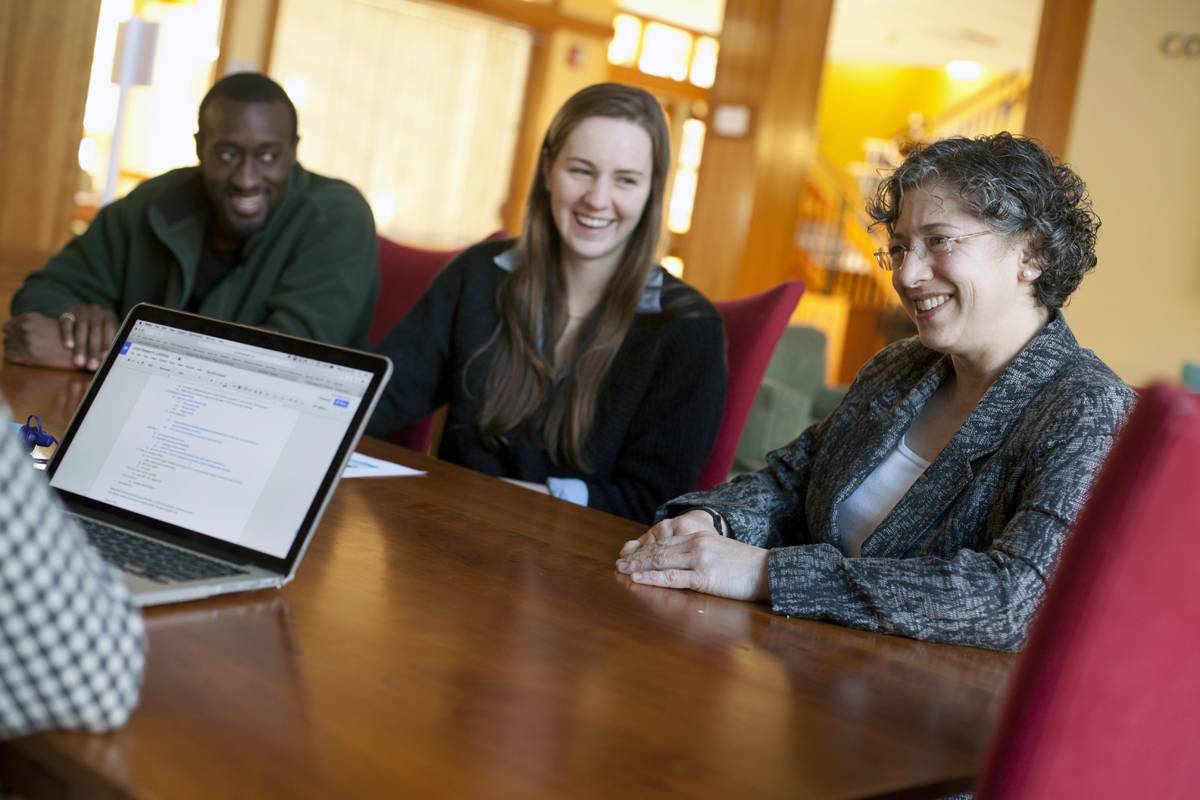A New Leader for Bridge
Business Bridge Program faculty director Judith White is excited to innovate and grow the nation’s first business bridge program for liberal arts students.

Business Bridge Program faculty director Judith White is excited to innovate and grow the nation’s first business bridge program for liberal arts students.
Late last year, Judith White, a visiting associate professor of management who has taught at Tuck since 2001, was appointed the faculty director of the Tuck Business Bridge program. Launched in 1997, Bridge is a residential immersive experience in business education for liberal arts students. White succeeded Robert Hansen, the Norman W. Martin 1925 Professor of Business Administration, and Gail Ayala Taylor, a visiting associate professor of business administration. Taylor stepped down after leading the Bridge program to national distinction and expanding it to include a women-only session at Smith College and a December session at Dartmouth.
In addition to teaching Negotiations to MBA students at Tuck, White teaches courses in Leadership and Business Psychology to undergraduates at Dartmouth College. It is this experience, White said, that motivated her to take on a leadership role in Bridge. “The liberal arts majors I’ve taught are super smart and critical thinkers, and they have a depth in whatever they major in, but they don’t know much about business,” White explained. “They need to bridge their liberal arts education and a career in the business world. And this is the reason the Bridge program was established.”
I want alumni to call me if they have suggestions about what Bridge should cover."
White, who holds a Ph.D. in social psychology from Harvard University and a J.D. from Yale University, researches negotiations, conflict resolution, and group dynamics. When she looks at Bridge through the lens of her research, she finds a program that imparts not just technical competency in business skills and knowledge—Bridge students take courses in financial accounting, corporate finance, marketing, managerial economics, and strategy, just to name a few—but also crucial experience in teamwork that prepares students for how projects get done in the real world.
“When Bridge students work on a group project, it’s very much like what they will find on the job,” she said. “It’s a stretch—none of them know how to do it when they start the program—and they have to figure it out and present it before mock clients.”
When Matthew Slaughter became Dean of Tuck in July of last year, the Bridge program came under the aegis of Punam Anand Keller, associate dean for innovation and growth. With that in mind, White has an expansive vision for Bridge and she’s been having conversations with staff, Bridge faculty, Bridge alumni (there are more than 4,000), and Bridge students, to hear their thoughts on what’s valuable about Bridge and how it can be enhanced. One strategic direction that has emerged from those conversations is that Tuck and Bridge alumni should play a more prominent role in the program. “I want alumni to call me if they have suggestions about what Bridge should cover or how they can get involved,” White noted.
While White is the faculty director of Bridge, she stresses that she is just one part of a team of Bridge staff, led by Program Director Nicole Faherty TP ’14. The Bridge staff are consistently rated by students as an outstanding component of the program. “It wouldn’t be so successful if it weren’t for the amazing people who run the program,” she said. “They go above and beyond.”
